Intel Z77 Motherboard Review with Ivy Bridge - ASRock, ASUS, Gigabyte, and MSI
by Ian Cutress on May 7, 2012 7:40 PM EST- Posted in
- Motherboards
- MSI
- Gigabyte
- ASRock
- Asus
- Ivy Bridge
- Z77
Gigabyte GA-Z77X-UD3H - BIOS
Gigabyte BIOSes have been a little up and down of late. When every other manufacturer was displaying their graphical BIOS systems with P67 and Z68, Gigabyte still had a basic system reminiscent of the previous 10 years of BIOSes. With X79 they introduced a graphical BIOS, termed '3D BIOS'. This was essentially a perspective image coupled with a range of BIOS options.
Since then, we have the next iteration of this '3D BIOS Technology'. From the outset, it looks shaper, sleeker and a refined version of the initial X79 launch. Gigabyte says that their BIOS system is completely bespoke, written from the ground up rather than an interface on a licensed system like other competitors. While this introduces a level of infancy to the system compared to others that have been using licensed back ends for a while, it should offer Gigabyte a wider range of maneuverability in terms of what fancy features they can offer.
In terms of design choices, Gigabyte have decided to use a generic outlay of most of the Z77 range with this screenshot - you will notice the PCIe layout is not the same. However, this does not matter much - by moving the mouse over any of the components in the image (CPU, Power Delivery, and IO) will bring up an explanation of the part, and clicking will give a variety of options. As a front screen, it would help if it stated the model of the motherboard being probed, the CPU, and the amount of memory. Other vendors have voltages and fan speeds as well - by going through this sort of layout, Gigabyte have essentially boxed themselves out of providing this information without some serious design changes to be made.
The buttons at the bottom of this 3D BIOS screen offer some other choices - boot sequence, languages, fan controls, and a quick save and exit. However, the 'Advanced' mode brings up the set of BIOS controls that allow for a greater choice and flexibility:
As a bonus compared to X79, this BIOS interface is a lot quicker. Previously, in order to use the number pad to insert values, the user would have to press Num Lock, wait five seconds for it to initialize, and then values could be entered. This time it works straight from the off. Most options will allow users to click and select values as well.
For overclocking, our options are split over many menus (which could be seen as a little annoying). For CPU and memory frequency settings, the 'Advanced Frequency Settings' option comes into play, which also allows modification of Turbo modes and power limits. The more advanced memory settings, such as subtimings, can be modified in the Memory menu. The 'fun' comes from the voltage settings screen, which has a different screen for CPU and Memory voltages, and then a third screen for customizing the digital power delivery options. 99.99% of users will never need the digital power delivery options though.
Fan controls come under the PC Health menu as per usual, and Gigabyte are still deciding to stick with an almost incomprehensible method of allowing users to customize their fan settings. By offering options in 'PWM Value / ºC', the only thing the user will understand is 'more means more power'. I would rather this actually had temperatures related to it, or some sort of in-BIOS graphing system to show what is actually happening.
In other Gigabyte BIOS related news, I had distinct trouble trying to get any G.Skill memory to boot on the shipping (F2) BIOS. It would simply keep resetting the board. In the end, I had to use some older Patriot memory to install a newer BIOS (F7) and then tried with the G.Skill again, with success.
Software
Gigabyte software takes a pinch of the old and a pinch of the new(ish). As the backbone, we still have EasyTune6, the all-in-one overclocking and monitoring tool. Although it looks weathered with age, with a decent upgrade (ET7?) it could be back on its feet. It certainly needed it with the version that came on the disk with the motherboard:
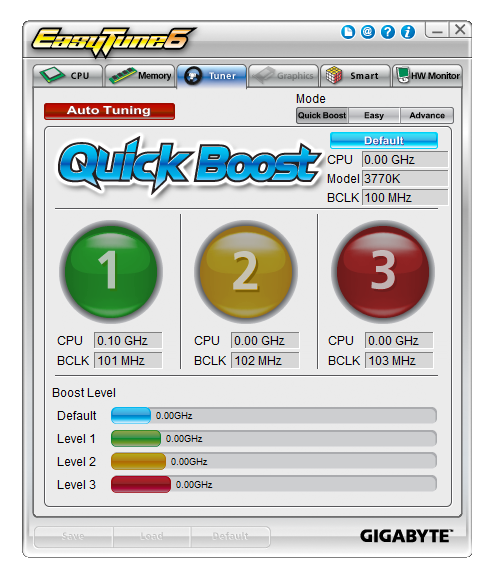
The version as shipped could not read the CPU properly, or suggest overclocks for it. I attempted to download the latest version from Gigabyte, only for it to be corrupt no matter where I downloaded it. However, I would expect it to be fixed as soon as possible - I have seen screenshots from overclockers using versions that work, so no doubt that will filter down to the public through the download website.
EasyTune6 has its usual gamut of basic and advanced overclocking options, as well as a hardware monitor and a very basic fan control front end. What is relatively new about ET6 is its auto-tuning feature. The red button on the screen above releases Gigabyte's new tuning feature for Ivy Bridge systems:
After confirming you wish to proceed, it does a series of stability tests with CPU ratios and BCLKs. It overall worked like a charm - I cannot fault it. With my processor, it kept all the turbo modes, but gave the processor a 4.81 GHz overclock under single threaded performance, reducing to 4.59 GHz for multithreaded loads, all at 1.236 volts at load. More about this in the overclocking section on the next page!
Gigabyte also bundle @BIOS with their motherboards, which allows the user to download and update the latest BIOS (or update from a file) from the operating system.
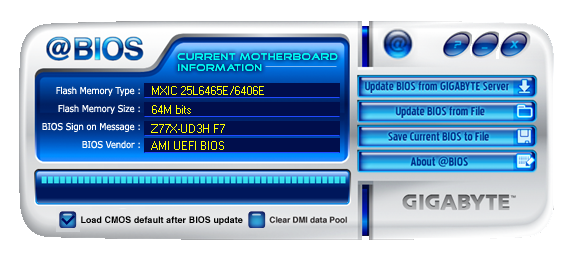


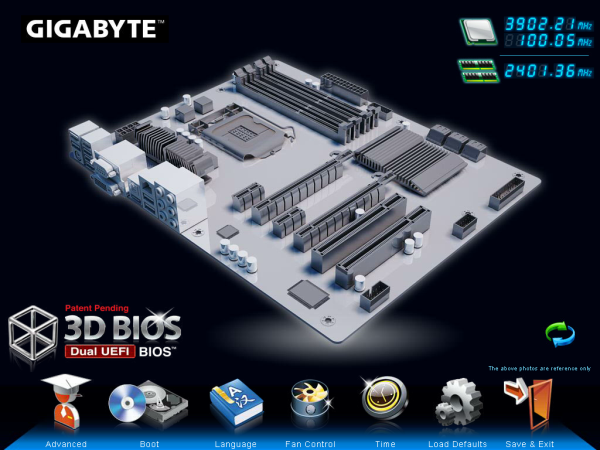
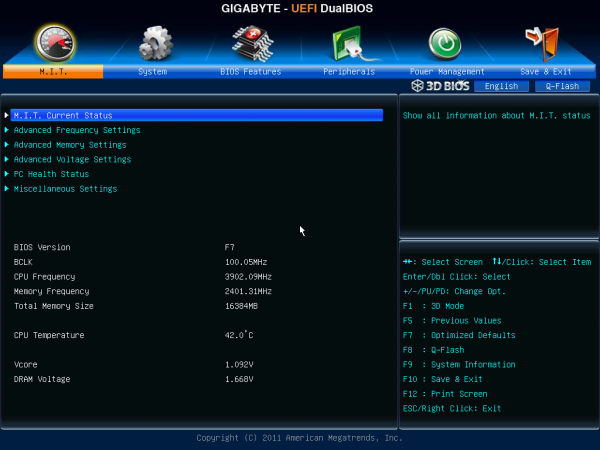
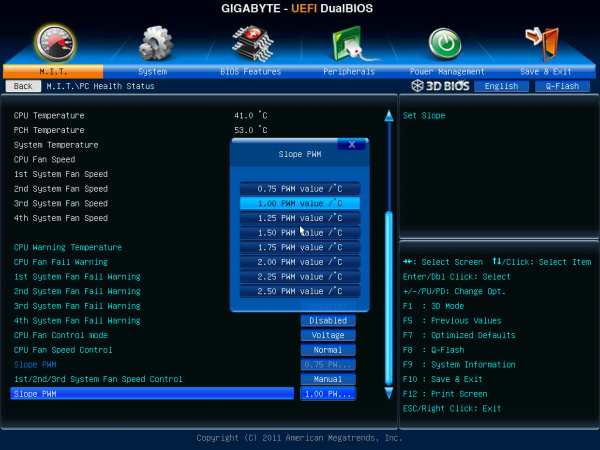






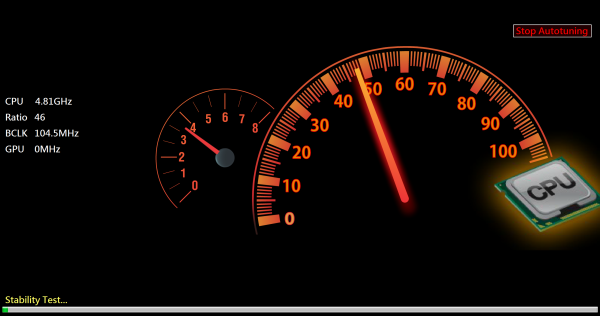














117 Comments
View All Comments
vegemeister - Thursday, May 10, 2012 - link
Yes, it is a very important feature. The Ivy Bridge IGP can drive 3 monitors. 4 display outputs means 3 of them are digital.Discrete GPUs increase idle power consumption, an as of this post none of them have particularly good open source drivers. Some of us just want lots of screens, good compiz performance, and silence.
philipma1957 - Monday, May 7, 2012 - link
I have been building a series of matx htpc/gamer machines.I have one with the basic
Gigabyte GA-B75M-D3H mATX board
and one with the
Gigabyte Ga-h77m-d3h mATX board.
I want to decide between
the ASUS P8Z77- m pro mobo or
the ASUS p8z77-m board and
last but not least the
Gigabyte Intel Z77 LGA 1155 AMD CrossFireX/NVIDIA SLI DVI/HDMI/DisplayPort Dual UEFI BIOS mATX Motherboard G1.SNIPER M3 .
I am liking the two builds I did with the lowend gigabyte boards and some intel i5 t2500t cpus I want a better board but I don't have many reviews to go by.
EnzoFX - Monday, May 7, 2012 - link
It just doesn't make a whole lot of sense to me. Are most DIY'ers really opting for ATX? Should they? I'd bet most people only plug in a video card and maybe one other card such as wireless or even a tuner. Every other possible need they may have would not only be met by mATX but even ITX is pretty full featured these days.You'd think mATX would be what most boards are targeted at, and leaving ATX for extreme builds/bragging rights. It's just like those high end video cards, most people don't buy those, rightfully and importantly so. Those should be the premium prices, and mATX should have a lower price. The focus just feels off.
Zoomer - Monday, May 14, 2012 - link
You mentioned people want mATX board. There by itself probably means that it can command higher prices, due to higher price tolerance of the purchasers.Caeric - Monday, May 7, 2012 - link
Enjoyed the review. I still have an old AMD dual core, and I'm considering a new system in the next couple of months so these help a great deal.I did find one error in the article, under the ASUS board:
"The ASUS P8Z77-V Pro retails at $225-$235, essentially $100 less than the ASRock Z77 Extreme4..."
It should say "...essentially $100 more than the ASRock..."
Movieman420 - Monday, May 7, 2012 - link
Curious as to this controllers' performance vs the ever present Marvell controllers. Does it use a pci-e lane or usb3 for it's bandwidth?FozzyofAus - Monday, May 7, 2012 - link
Great review.I'm leaning towards mATX as well for this build as I've never used more than four expansion slots and currently I'm only using 3 (one is USB3 which won't be needed in the new board).
I'd like to have a bit more room in my current case and the option to reuse this motherboard in a smaller case in future if I upgrade my main rig to Haswell next year.
Any chance of adding Asrock Extreme4-m to the next motherboard roundup?
spronkey - Monday, May 7, 2012 - link
Sorry guys but this review was a bit average. Comment on the various different controllers used by the motherboard manufacturers but don't offer any kind of review on them?The good additions: DPC latency and boot time.
The missing? Well everything else.
I was especially hoping for a comment on the VIA audio on the UD3H - it's been a while since I've seen VIA codecs on mainstream boards.
I'm also amazed that you didn't slam the ASUS board for it's price and lack of features. Realtek 892? On a board that's nearing twice the cost of the ASRock? Seriously?
No comment on the durability of the boards either? Hrm. No separation in testing of the different controllers on each board?
A bit lacking, sorry.
ggathagan - Thursday, May 10, 2012 - link
Perhaps you're commenting on the wrong review.As Ian stated multiple times throughout the review, Asus is using Intel NIC's on their boards, in this case, the Intel 82579V.
Durability is a function of time. Please point out the other motherboard reviews that covered durability.
spronkey - Thursday, May 10, 2012 - link
He stated ASUS were using Intel, sure. But didn't get into any details other than stating they exist about the fact that there are multiple USB3 controllers and SATA controllers on each board. No benchmarks comparing them etc.In fact does it even mention which controllers were tested?
And Durability is a function of construction quality and time. It would be nice to see comments on points such as board weight and flex, quality of soldering, quality of components used on the board (according to an electrical minded person on OCN, Gigabyte uses significantly higher rated MOSFETs than other manufacturers), temperatures of chipsets and VRM circuitry. These are things I can't easily find out by reading manuals.